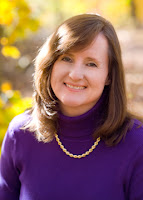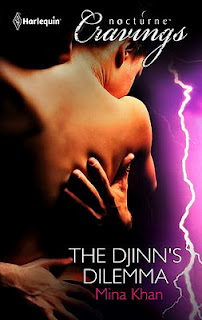Today I have something a bit different for you. Author Wendy S. Marcus is going to give us some insight into writing medical romance (and a chance to win a book!) This may be a subgenre you've never heard of, but I'm sure you all are familiar with the medical shows that have been so successful on television. Hot doctors. High drama. Life and death stakes. What's not to love?
Well, Harlequin has a whole line dedicated to those types of stories! : ) So I hope you'll give Wendy a warm welcome and a congratulations on her debut.
Writing a Quality Medical Scene for Romance
By: Wendy S. Marcus
Thank you so much for hosting me on the 24th stop on my blog tour to promote my debut Harlequin Medical Romance, WHEN ONE NIGHT ISN’T ENOUGH. Today I’ve decided to chat about writing a quality medical scene for romance.
Medical scenes are great for infusing tension, drama and emotion into a story. They are also fraught with risk that too much detail, gore or technical speak will pull a reader out of a story.
The most important first step is to know your audience. A reader who picks up a medical thriller or suspense and adventure book is expecting a different experience than a reader devouring a romance.
The second step is to determine what you want to accomplish with the scene. Is it to introduce the heroic doctor and compassionate nurse? Is it to show how well they work together, how skilled they are, and/or how much they respect each other? Is it to drive a wedge in the romantic relationship of a non-medical hero and heroine? Or, conversely, is it intended as a catalyst to bring an estranged couple back together?
After that, you need to identify which of the characters in the scene has the most to lose or gain, and write in their point of view (POV). Is it the mother whose three-year-old son has been rushed to the Emergency Room after being found at the bottom of a neighbor’s swimming pool? Or the nurse on duty who is struggling to function while reliving the night her own young son died as the result of a drowning accident one year prior? Or the neighbor who was in charge of babysitting the child, who loves the child as if it were his own, and who had planned to propose to the child’s mother that evening? Or is it the doctor who remained at work after the end of his shift to assist in resuscitating the child, who refused to report off to his relief so he could be certain every possible measure was taken to save the child’s life, despite his fiancé’s ultimatum: Come home on time or we’re through?
Do you see how identifying who has the most to lose or gain in the scene and writing in their POV adds a whole other dimension? (Now I know some of you may have been quick to think: Of course it would be the mother who had the most to lose. Not necessarily. It’s all how you, the author, choose to write the scene and who your hero and heroine happen to be.)
Next, write the scene through the senses of the POV character. Let the reader experience the emotion of the scene through your character’s observations and reactions. A medical scene needs to be about more than cataloging injuries, sopping up blood, and treating illness. In medical romance, as in all category romance novels, the focus of each scene needs to be on the relationship of the hero and heroine. How does the medical scene impact the POV character? How does it impact the relationship between the hero and heroine?
You don’t need to be a medical professional to write a medical scene. Not all medical romance authors are doctors or nurses. My editor says, “If you’re good with research, you can write a medical romance.” But don’t skimp on the research. Even though I’m a nurse, I do extensive research before I write each medical scene to make sure my information (and memory) is accurate. Even though you’re writing a romance, you still want your medical scenes to be as realistic and accurate as possible - while keeping the blood, guts, and gore to a minimum.
And readers like closure. If you go into the backstory of a patient, or he/she shows up in more than one scene, your readers will want to know what happens to him/her.
Here is an excerpt of a medical scene from Chapter 9 of WHEN ONE NIGHT ISN’T ENOUGH:
Allison a.k.a Ali, a nurse, is my heroine. Jared a.k.a. Dr. P., an E.R. doctor, is my hero.
Gas pedal met floor mat and the car took off. Ali made a screeching turn up the hilly drive to the hospital, honked at pedestrians too stupid to look where they were walking, and skidded to a stop under the bright red “Emergency Room” sign. She slammed the car into park, and, heart pounding, jumped out and ran for help.
“Come on. Come on.” Gramps could die in the time it took the freakin’ electric doors to open. Once inside, Ali yelled out as loud as she could. “I need help. Now.” She ran for the empty stretcher in Trauma Room One. “Dr. P., Polly. Where is everyone?”
Pushing the stretcher to the sliding doors Ali met up with Jared who ran out of Exam Room Three and Polly who came from Trauma Room Two.
“It’s Gramps.” Nothing more needed to be said. Polly helped her navigate the stretcher. Jared ran out ahead of them. By the time Ali and Polly had the stretcher out to the curb; Jared stood holding Gramps in his arms.
“He’s conscious,” Jared said.
The second Jared laid Gramps on the stretcher Ali started to push.
“Wait,” Polly called. “The side rails.”
Ali knew better than to transport a patient without the side rails up. She locked the railing on her side of the stretcher into place while Polly did the same on the other side.
“Let’s go. Let’s go,” Jared called out. On the way in Ali rattled off Gramps’s past medical history, including a prior myocardial infarction five years ago and his current medications.
Another nurse on duty joined Jared, Polly, and Ali in Trauma Room One. She whipped out her scissors, prepared to cut up the front of Gramps’s shirt. “Wait. That’s his favorite shirt,” Ali said, fumbling to undo the buttons.
“You shouldn’t be in here,” the nurse, not one of Ali’s favorite people at the moment, said.
The shirt unbuttoned, Ali struggled to take it off. Polly tried to help, twisting Gramps’s arm into what looked like an uncomfortable position. “Careful. You’re going to hurt him,” Ali said.
“We need to get him hooked up to the monitor,” Polly said. “Think like a nurse, or Teresa’s right. You shouldn’t be in here.”
The shirt finally off, Polly attached the chest leads, Teresa hooked up the oxygen, and Ali primed the IV tubing. That done, she grabbed the basket of IV supplies and prepared to insert the peripheral intravenous cannula. She straightened the arm and tied the rubber tourniquet above his elbow. She exposed the antecubital fossa and palpated for the vein. Once she identified the insertion site, she opened the prep pad and cleansed the area. She operated on autopilot. Had done this thousands of times.
Bevel up, she positioned the needle and prepared to puncture the skin. Gramps’s skin. Her eyes filled with tears. She wiped them away. Lowered the cannula. Her hands shook. A tear dripped onto the surface she’d just disinfected.
“Outside,” Jared said. His tone authoritative.
She didn’t move, knew she was hindering their care but couldn’t get her legs to walk. Gramps’s color looked gray. Not good. The cardiac monitor beat out an irregular rhythm, far slower than normal. He lay motionless on the table, except for the shallow rise and fall of his chest.
A strong arm came around her shoulders and led her to the door. “We’ll take good care of him, Ali,” Jared said. “Wait in the lounge.”
“Line’s in,” Polly said. “IV infusing.”
“Waiting for medication orders, Dr. P.,” the other nurse said.
Ali pulled away and ran for the stretcher unable to bear the thought this may be the last time she’d see him alive. “I have to tell him where I’ll be.” She leaned in close to Gramps’ ear, crying in earnest. “I’ll be right outside, Gramps. Polly’s here. And Dr. P. They’ll take good care of you.” She kissed his cool, clammy cheek. “I love you. Don’t you leave me. I need you so much. Especially now.”
To learn more about me or to read an excerpt from the beginning of WHEN ONE NIGHT ISN’T ENOUGH, visit my website:
http://WendySMarcus.com
If you like what you’ve read so far, WHEN ONE NIGHT ISN’T ENOUGH is available:
In the UK in stores and on
Amazon
So what’d you think about my excerpt(s)? Can you envision yourself adding a medical scene to your next manuscript? I’m happy to answer any questions you may have about writing a quality medical scene for romance or about Harlequin Medical Romance in general. Are you a fan of medical romance? Do you watch medical drama shows on television? Are you willing to give my medical romance a try? One lucky commenter will win a copy of my 2in1 UK edition which includes a complete novel by author Janice Lynn!

Wendy S. Marcus lives in the beautiful Hudson Valley region of New York with her husband, two of her three children, and a much loved Bichon Frise named Buddy. A nurse by trade, Wendy has her master’s degree in health care administration. After years of working in the medical profession, Wendy has taken a radical turn to writing hot contemporary romance with strong heroes, feisty heroines, and lots of laughs. When she’s not writing, she enjoys spending time with her family and blogging/e-mailing/tweeting with her online friends. To learn more about Wendy visit her website, http://www.WendySMarcus.com.

All content copyright of the author. Please ask permission before re-printing or re-posting. Fair use quotations and links do no require prior consent of the author. ©Roni Loren 2009-2011 |Copyright Statement|
 MinaKhan is a Texas-based writer and food enthusiast. She daydreams of hunkyparanormal heroes, magic, mayhem and mischief and writes them down as stories.Between stories, she teaches culinary classes and writes for her local newspaper.Other than that, she's raising a family of two children, two cats, two dogs anda husband.
MinaKhan is a Texas-based writer and food enthusiast. She daydreams of hunkyparanormal heroes, magic, mayhem and mischief and writes them down as stories.Between stories, she teaches culinary classes and writes for her local newspaper.Other than that, she's raising a family of two children, two cats, two dogs anda husband.






